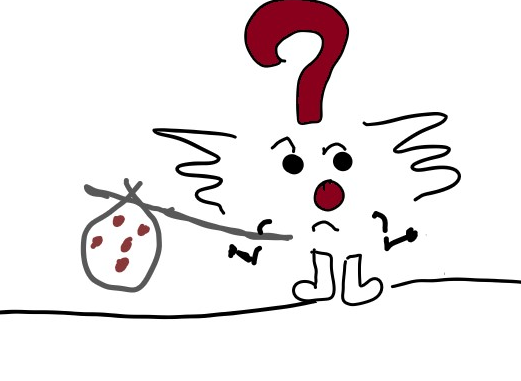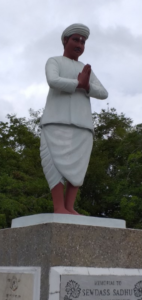
A few weeks ago, my little Question Guy trundled off on an adventure to ask my colleagues if there were any topics that they might like to have included in these blog posts. So, esteemed colleagues, this is for you!
My colleague and friend made the point that during a PhD, we often only see our achievements when examining our outputs, but that in actual fact, the work that goes before them is extensive. A personal example lies in the development of the test that I am using to highlight differences in functional ability across individuals. The test took about a year to investigate, and build (with much help from real engineers!). This work, however, may only form the sum of a couple of hundred words in the thesis.
At the beginning of the year, before the New Way of lockdown began, I was fortunate to visit the land of my sadly late father’s birth, and the place where I grew up, with my mum. We stayed in Trinidad with amazing friends and hosts, who went out of their way to rebuild the memories we had left behind some 35 years prior.
Whilst there, I had the honour of once again standing on the same ground as my teacher and life-long mentor as we re-trod the corridors of my beloved school where she is now Principal. From there, she bundled us all into a car to take us on a day long adventure that took in all manner of sites from hummingbirds to giant statues of Hindu Gods.
It was on this day that she told me the story, and indeed took me to see and experience, The Temple in the sea. Arriving at the site, we were greeted by a beautiful blue and white temple that rose out of the sea in all its splendour. What you see as you approach is actually the reinstated building as delivered by the Trinidad government decades after the original temple was built. However, prior to this external outcome, there exists a story.
This is a true tale of perseverance, and the temple as it stands is undeniably glorious. But, to me, its true beauty lies in the story behind the Temple in the Sea. This is a story of a man named Sewdass Sadhu who wished to build a place of worship.
In 1947, Mr Sadhu wished to build a temple, but failed to be granted access to land. He attempted to build it on a piece of land, but because this turned out to be private land, the government took the temple down and it’s architect was sent to prison. 5 years later, Sadhu made a second attempt. This time, however, he decided that he would build his temple out at sea – a no mans land. He carried stone by stone out to sea as he began to build the foundations to his place of worship. 25 years later, there stood a temple. He had achieved his goal. But to me, it is the story of perseverance and belief, and passion for what he is doing that endures.
We all have our own Temples in the Sea. To us as PGRs, I guess at least one of those would be the Thesis. The problem lies in our tendency to measure ourselves by the temple, and not by the stones that build it. Each stone we lay, is a part of our academic foundation. It adds to us as people, and as researchers. I would argue that each small pebble is at least as important, and beautiful, as the temple itself.
Afterthought:
This week I didn’t really find what I was looking for in the literature. But I did come across this. A reminder that the valley of, let’s say despair, does exist…..but none of us are alone, and it won’t last forever!!
The Valley of S**t: How to cope when you reach research rock bottom by Catrin Pedder Jones – page 60 of the PsyPAG guide!
http://www.psypag.co.uk/wp-content/uploads/2019/01/PsyPAG-Guide-2018-WEB.pdf
Lara Carballo
PhD Research Student
Institute for Future Transport and Cities

